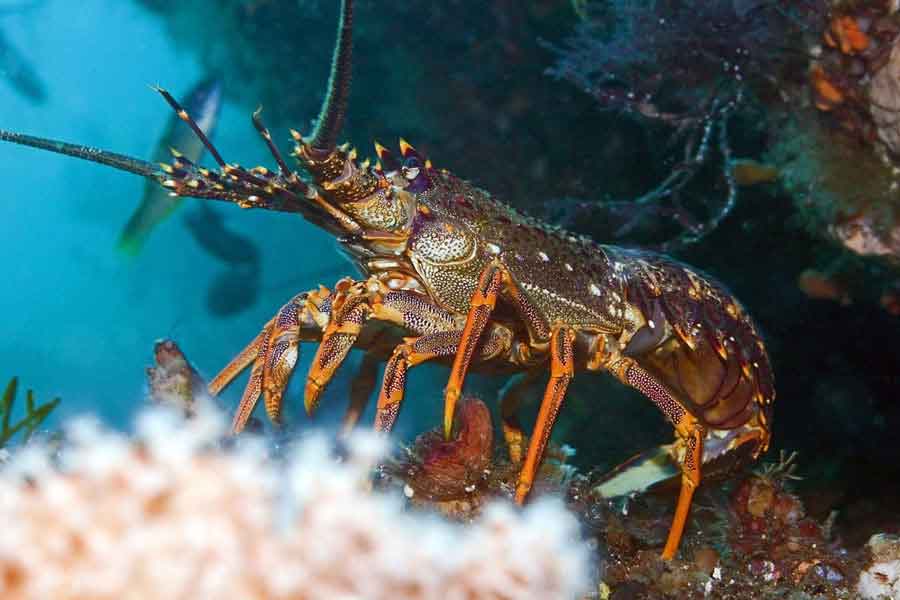
If marine animals did not have some form of communication, both mating and reproduction would be entirely fortuitous, which could even lead to the extinction of the species. It is essential, then, that the male and female of a particular species have clear signals to know when the time for copulation has arrived in order to synchronize their encounter.
Often, this communication is based on odors, a trail in the water that the male can follow to find a willing female. Pheromones generate subtle scents emitted by certain species to be detected by their potential sexual partners.
Among lobsters, the pheromones released by the females are identified with the hormone responsible for molting the exoskeleton. When the animal grows, it needs to shed its old exoskeleton because this rigid shell would hinder the normal development of the body. The problem is that there is a moment of great vulnerability when the female loses the old exoskeleton and hardens the new one. At that moment, she would be an easy prey for attentive predators who would find her without any protection.
That’s why the female starts releasing pheromones when molting is about to occur, and the males begin to approach her, attracted by the scent. The still-armored female has time to choose the right male and reject the others, as well as defend herself against predators attracted by the same substance. Once the male is chosen, he waits until she has shed her exoskeleton, then mounts her and embraces her with his strong legs, protecting her with his own exoskeleton and antennae from potential attackers. The male will remain in this position until a new exoskeleton begins to form, providing protection for the female once again.
In this way, the male protects the female and the fertilized eggs she carries, contributing doubly to the preservation of the species. In many animal species, the male, perhaps because he is stronger, often adopts a defensive position to protect the female and offspring from potential predators. In fact, when the male molts his own exoskeleton, he does it at a different time, and in this case, he doesn’t have any assistance. He simply seeks refuge in the protection of a cave until the new exoskeleton hardens.
Since time immemorial, many animals have followed the route of pheromones that guide them to females, ensuring the sacred cycle of life. But the sea that sheltered them is no longer the same sea. The elderly sea has undergone more changes in the last 50 years than in the previous 50,000. Today, pollution traces other routes of odor, death routes that confuse animals and lead them to extinction. It is a cruel fate for humans who fail to understand that their existence is linked to that of other animals, a cruel fate for the arrogant who fail to understand the balance of life.
«One cannot defend what one does not love, and one cannot love what one does not know.»

